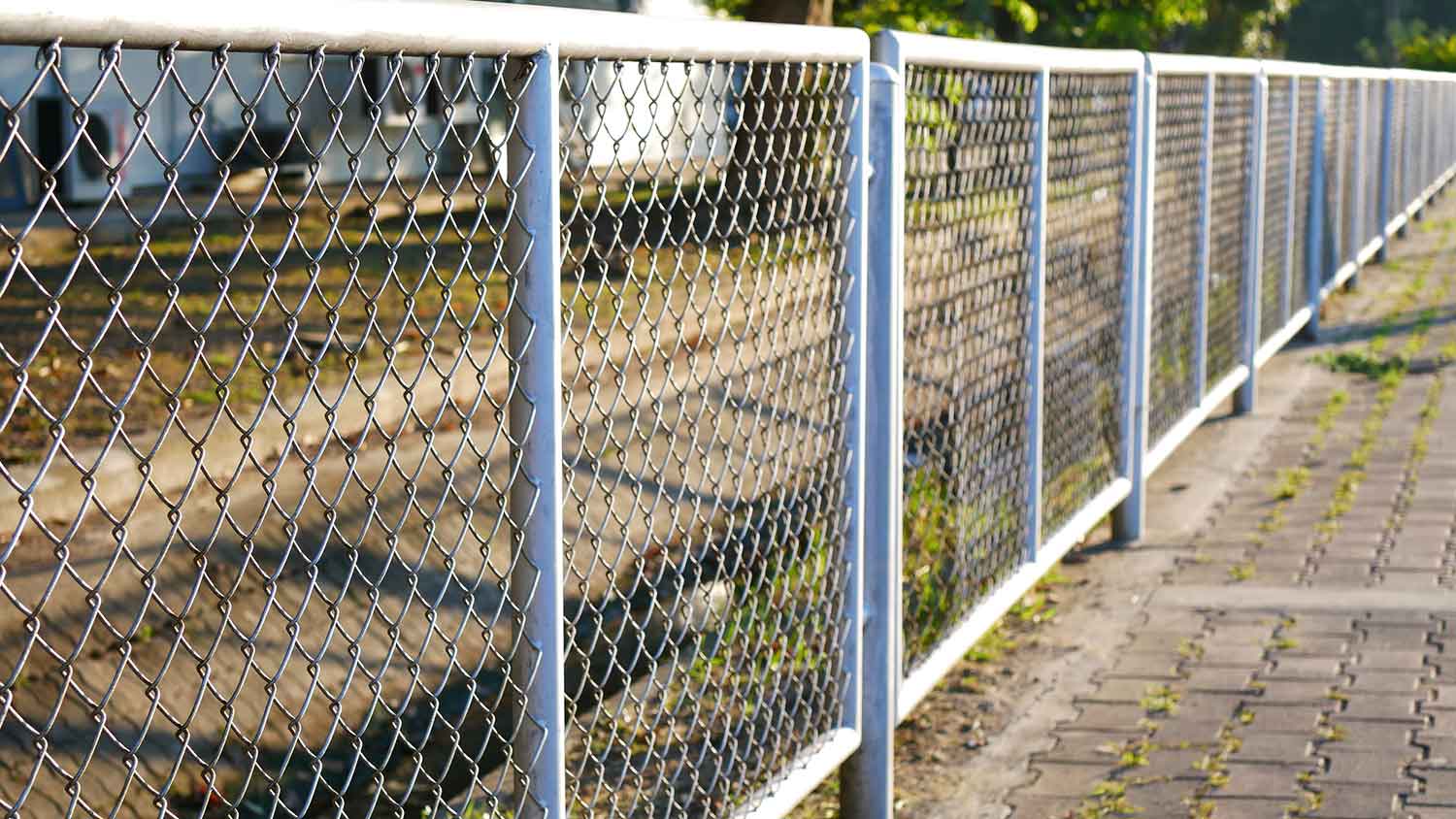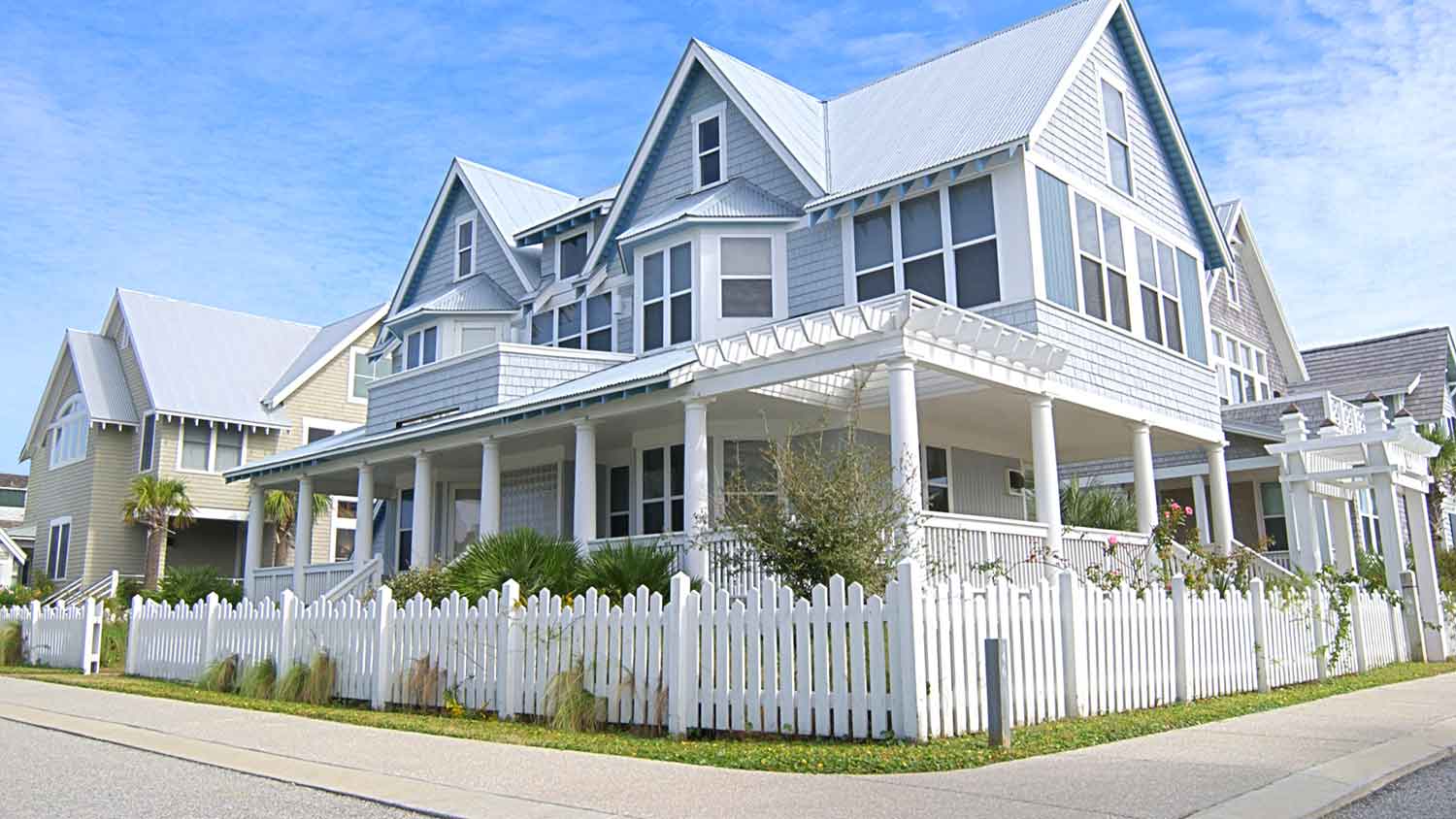What Is Chain Link Fencing? Everything You Need to Know
Don’t underestimate this low-cost fence style


Let’s be honest: Chain link fencing might not be the first option that comes to mind when you’re considering fence options for your home. But it’s time to revisit this underestimated fence style, and determine what is chain link fencing, and why should I add it to my property?
Although this fencing style is not typically as popular as vinyl and wood fencing, chain link is similarly versatile yet much more budget-friendly—and it has a few other advantageous features that make it worthwhile. Keep reading to find out what this fence style is all about, including its pros, cons, and installation costs.
What Is Chain Link Fencing?
Chain link fencing is characterized by woven wires that form a signature diamond pattern. The wires are typically made of one of four materials—stainless steel, galvanized steel, aluminum, or vinyl.
When chain link fencing is constructed, wires are hung vertically from the top to bottom bar, and then bent one-by-one in a zig-zag pattern and hooked onto neighboring wires. This chain-link pattern is visually distinctive and provides a practical function: preventing pests and rodents from easily accessing your property.
Pros Of Chain Link Fencing

Still not convinced that chain link fencing is the right choice for your property? Check out these advantages to learn about its best qualities.
Affordable
The cost of a chain link fence is significantly less expensive to install than wood or vinyl fencing. It costs $2,200 on average to install a chain link fence around an entire property and between $10 and $20 per linear foot of labor and materials. By contrast, the cost to install a vinyl fence around a whole home costs $3,800 on average, and the cost to install a wood fence is $3,000 on average.
Low-Maintenance
Most chain link fences are long-lasting and extremely durable whether they’re made of stainless steel or vinyl. Unlike wood fencing, you don’t have to worry about this option rotting or decaying over time.
The best way to maintain a chain link fence is to apply rust protection annually to protect it from the outdoor elements. You should also clean it regularly and avoid climbing on it to preserve its structure.
Easy to Repair
Even if it does get damaged, you can fix a chain link fence by simply removing the broken part and patching it up with new material. These types of repairs are typically a manageable DIY project, but it’s also a simple, fast task for a local handyperson to tackle.
DIY Installation
If you’re trying to cut down the cost of your fencing project, don’t worry, chain link fencing is a doable DIY installation for handy homeowners. Learning how to install a chain link fence involves careful layout planning, purchasing or renting the required supplies, and a free weekend to complete the project.
Cons of Chain Link Fencing
This fencing option has a lot to offer, but there are a couple of downsides you should also take into account before making your final choice. Keep reading to learn the disadvantages of chain link fencing.
Limited Privacy
One of the biggest reasons people opt out of chain link fencing is because it doesn’t offer much privacy. Unlike wood or vinyl fencing, this fencing type doesn’t hide your home unless you take extra steps to cover chain link fencing yourself—like installing an additional bamboo screen or growing a living screen with a vine plant. If you’re planning on using chain link fencing to protect a garden bed in your backyard, and don’t have a concern about privacy, this issue doesn’t apply to you.
Limited Security
Although chain link fences are hard for animals to penetrate, their diamond pattern makes it easier for trespassers to grab on and climb over. If you have any security concerns, opt for a chain link fence that’s above the average 4 to 6 feet in height.
DIY Installing Chain Link Fencing vs. Hiring a Pro
If you’re set on installing a chain link fence, the next step is to decide whether you’ll roll up your sleeves and install it yourself or hire a pro to take on the job.
Hiring a pro fencing contractor in your area to install a chain link fence costs between $1,300 and $3,400 on average. Labor costs range from $3 to $20 per linear foot of work, for a total between $1,000 and $3,000 without accounting for materials.
If you go the DIY route, you’ll only need to buy the required materials and a few supplies, like fence and bolt cutters. In general, you can expect to recoup up to 50% of the overall project costs by doing it yourself.















